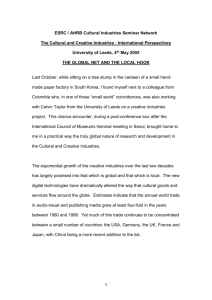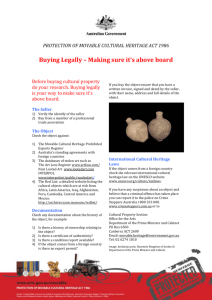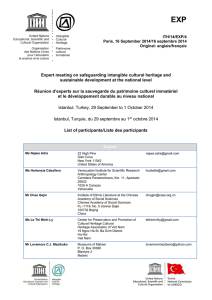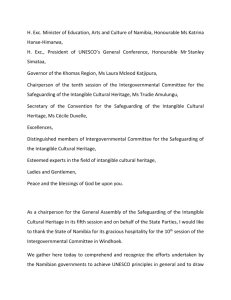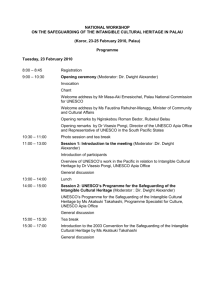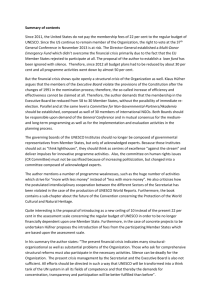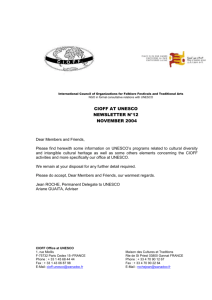MINISTÈRE DES AFFAIRES ÉTRANGÈRES ET EUROPEENNES
advertisement
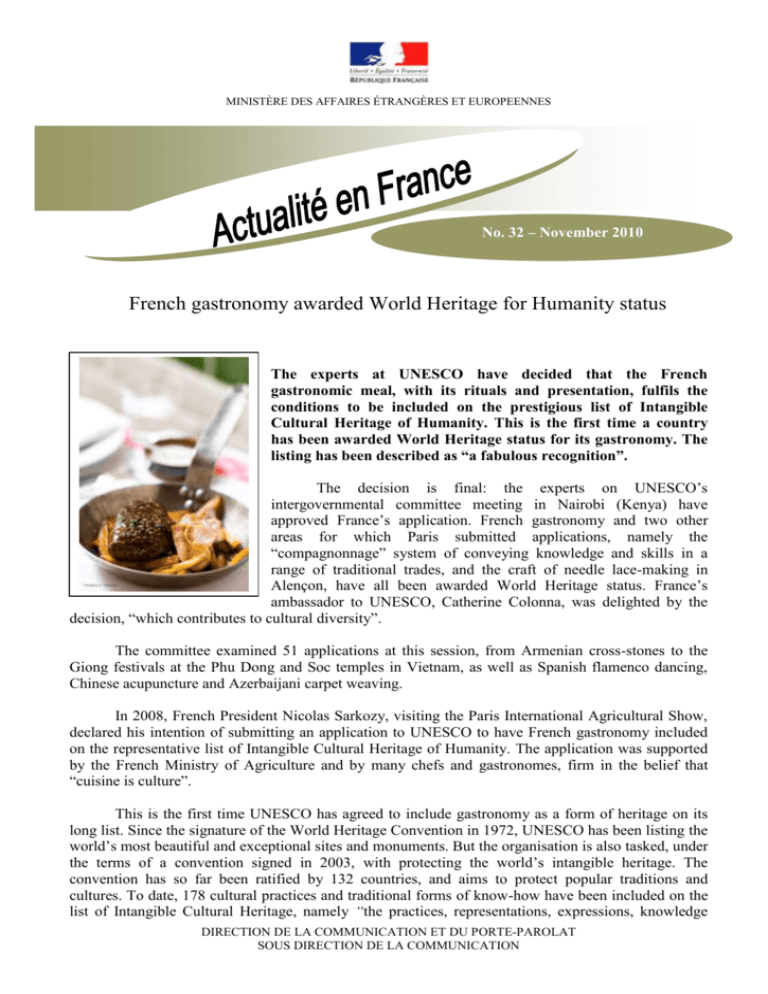
MINISTÈRE DES AFFAIRES ÉTRANGÈRES ET EUROPEENNES No. 32 – November 2010 French gastronomy awarded World Heritage for Humanity status The experts at UNESCO have decided that the French gastronomic meal, with its rituals and presentation, fulfils the conditions to be included on the prestigious list of Intangible Cultural Heritage of Humanity. This is the first time a country has been awarded World Heritage status for its gastronomy. The listing has been described as “a fabulous recognition”. The decision is final: the experts on UNESCO’s intergovernmental committee meeting in Nairobi (Kenya) have approved France’s application. French gastronomy and two other areas for which Paris submitted applications, namely the “compagnonnage” system of conveying knowledge and skills in a range of traditional trades, and the craft of needle lace-making in Alençon, have all been awarded World Heritage status. France’s ambassador to UNESCO, Catherine Colonna, was delighted by the decision, “which contributes to cultural diversity”. The committee examined 51 applications at this session, from Armenian cross-stones to the Giong festivals at the Phu Dong and Soc temples in Vietnam, as well as Spanish flamenco dancing, Chinese acupuncture and Azerbaijani carpet weaving. In 2008, French President Nicolas Sarkozy, visiting the Paris International Agricultural Show, declared his intention of submitting an application to UNESCO to have French gastronomy included on the representative list of Intangible Cultural Heritage of Humanity. The application was supported by the French Ministry of Agriculture and by many chefs and gastronomes, firm in the belief that “cuisine is culture”. This is the first time UNESCO has agreed to include gastronomy as a form of heritage on its long list. Since the signature of the World Heritage Convention in 1972, UNESCO has been listing the world’s most beautiful and exceptional sites and monuments. But the organisation is also tasked, under the terms of a convention signed in 2003, with protecting the world’s intangible heritage. The convention has so far been ratified by 132 countries, and aims to protect popular traditions and cultures. To date, 178 cultural practices and traditional forms of know-how have been included on the list of Intangible Cultural Heritage, namely “the practices, representations, expressions, knowledge DIRECTION DE LA COMMUNICATION ET DU PORTE-PAROLAT SOUS DIRECTION DE LA COMMUNICATION MINISTÈRE DES AFFAIRES ÉTRANGÈRES ET EUROPEENNES and skills (...) that communities transmit from generation to generation (...), which provides them with a sense of identity and continuity, thus promoting respect for cultural diversity and human creativity.” The members of the committee noted that the gastronomic meal in France was “a customary social practice for celebrating important moments in the lives of individuals and groups, such as births, weddings, birthdays, anniversaries, achievements and reunions”. As a result, it is a practice that strengthens the collective identity and contributes to the cultural diversity of the world. The emphasis was on togetherness, the pleasure of taste, and the balance between human beings and the products of nature. “The French like to get together, drink well and eat well to celebrate special occasions. It is a part of our tradition and one that is very much alive,” stated Catherine Colonna during the session. The emphasis is therefore on the meal combined with French cultural identity in all its aspects: purchasing high-quality ingredients, preferably from local sources, whose flavours work well together; selecting a careful combination of dishes from an ever-increasing array of recipes; combining the right food with the right wine; the aesthetics of table decoration; and conversation. The gastronomic meal should also follow a specific pattern, starting with an aperitif and ending with liqueurs, with at least four courses between them, namely a starter, fish and/or meat, cheese and dessert. The meal is part of the French identity. It is as likely to include dishes from Normandy or Provence as Burgundy or Alsace. “French gastronomy is also open to a very varied range of other influences, which can produce new flavour combinations. It involves a concept of openness that needs to be taken into account in line with the reality of the world we live in,” observes Hubert de Canson, France’s deputy permanent representative to UNESCO. UNESCO raised the issue of the risk of abusive use of the UNESCO label for commercial purposes. “France will take good care to apply the spirit and the letter of the Convention on Intangible Heritage in full,” emphasised Catherine Colonna. The listing will mean taking concrete measures designed to help protect the French gastronomic meal, particularly in terms of educational support in schools. “Education in this area is essential, in order to raise awareness amongst young people of the culture of taste and hand the art of fine dining down to future generations,” says Hubert de Canson, adding, “It is important to promote academic and educational aims in this area.” Annik Bianchini Website www.unesco.org: UNESCO website DIRECTION DE LA COMMUNICATION ET DU PORTE-PAROLAT SOUS DIRECTION DE LA COMMUNICATION
